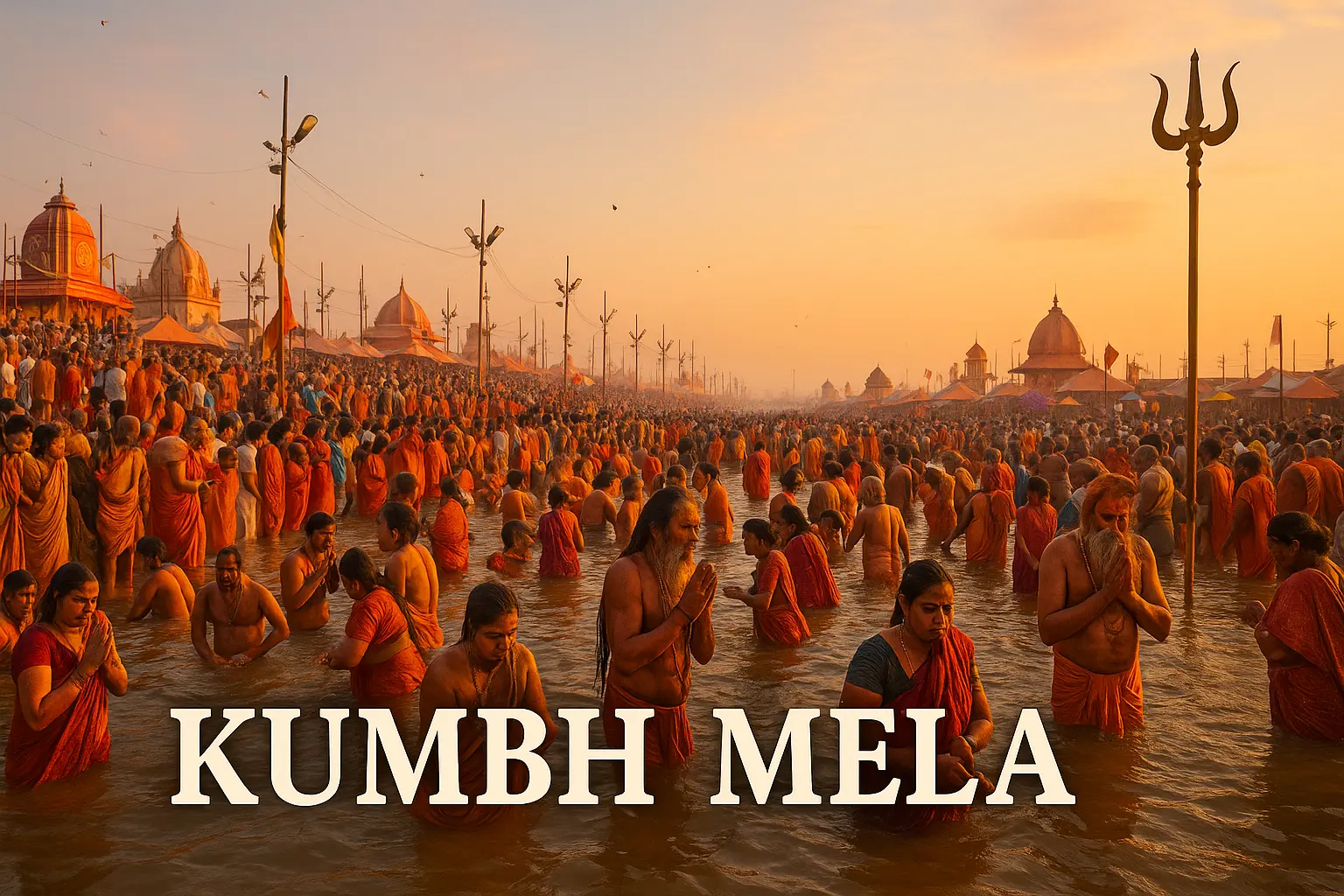Kumbh Mela: The World’s Largest Spiritual Gathering 🌍
Experience Kumbh Mela 2025, the world’s largest spiritual gathering! Learn its history, rituals like Shahi Snan, and how to join the festivities in Prayagraj. Embrace purification and unity! 🙏
Aditya Pandey

Kumbh Mela, the grandest spiritual festival in Hinduism, is a massive pilgrimage that draws millions of devotees, sadhus, and tourists to the banks of India’s sacred rivers for a holy dip. Held every three years, rotating among four sacred cities—Prayagraj, Haridwar, Nashik, and Ujjain—the Kumbh Mela is celebrated every 12 years at each location, with the Maha Kumbh occurring every 144 years. Known for its vibrant rituals, spiritual discourses, and the iconic Shahi Snan (royal bath), Kumbh Mela is recognized by UNESCO as an Intangible Cultural Heritage of Humanity.
For a deeper understanding of India’s rich festival traditions, explore Ancient Festivals of India.
Historical Background of Kumbh Mela 📜
The origins of Kumbh Mela are steeped in ancient Hindu mythology and historical records. The festival’s roots trace back to the Puranas, which narrate the mythological Samudra Manthan (churning of the ocean), where gods and demons fought for the amrita (nectar of immortality). Drops of this nectar fell at four locations—Prayagraj, Haridwar, Nashik, and Ujjain—sanctifying their rivers and giving rise to Kumbh Mela. The term Kumbh (pot) refers to the vessel that held the nectar, and Mela means fair or gathering.
Historical evidence suggests Kumbh Mela was formalized around the 8th century CE, with the philosopher Adi Shankaracharya organizing gatherings of ascetics to discuss spiritual matters. Chinese traveler Xuanzang’s 7th-century accounts describe large congregations at Prayagraj, indicating the festival’s antiquity. By the 19th century, under British rule, Kumbh Mela became a significant socio-religious event, with detailed administrative records noting millions of attendees.
The 2019 Prayagraj Kumbh Mela saw over 240 million visitors, earning a Guinness World Record as the largest human gathering. Its historical significance lies in its role as a spiritual, cultural, and social unifier, drawing diverse communities to sacred rivers every 12 years. 🌊
